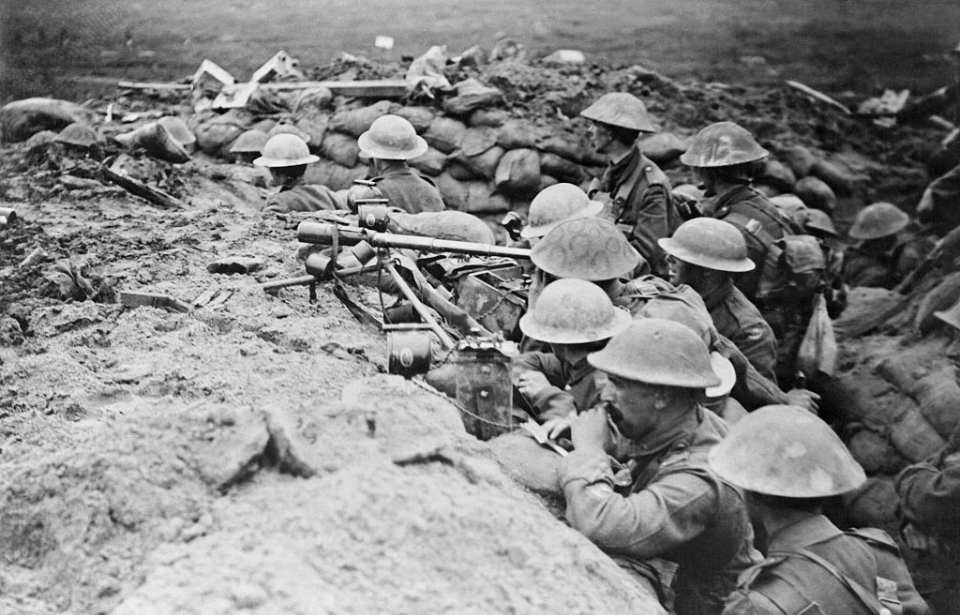World War I – commonly referred to as the “Great War” – devastated Europe from 1914-18. The result of growing tensions on the continent, it involved several global superpowers and saw fighting occur not only along the Western Front, but in the Middle East, the Pacific and parts of Asia.
The primary parties involved were the French, British and Germans, with the former two countries receiving help from Italy, the United States, Canada, Japan and Russia. Germany’s military numbers were supplemented by soldiers from the Ottoman Empire, Bulgaria and Austria-Hungary.
After over four years of intense and bloody fighting, the armistice was signed in November 1918, officially bringing the conflict to an end. More than 100 years later, remnants of the war still mark Europe’s landscape, with everything from trench networks and bunkers to artillery shells and helmets still present.
Main de Massiges
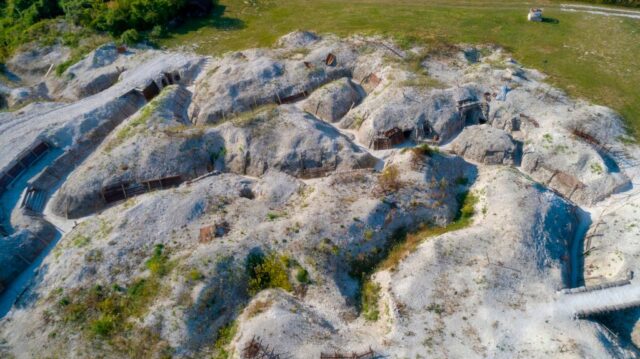
The above photo is an aerial view of the Main de Massiges, in the northeast section of the Marne. The trenches that wind through the area have been under restoration since 2008, with volunteers meticulously working to preserve them, in the hopes of showing visitors what it was like to serve in the maze during the First World War.
Livens projectors delivered poison gas attacks
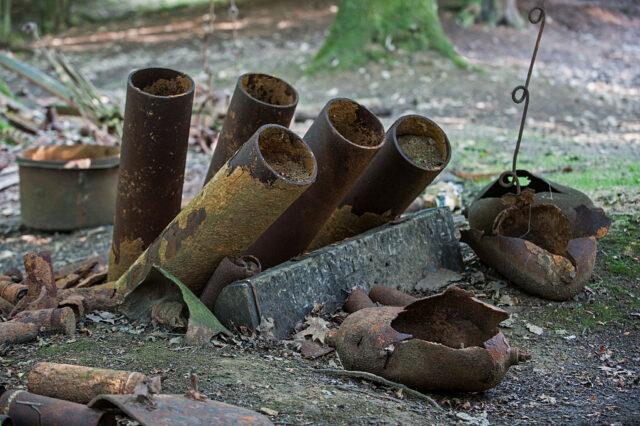
Equipped by the British Army during WWI, Livens projectors were used to launch chemical attacks against enemy troops. They became the standard upon the introduction of gas warfare by the Germans in April 1915, and remained in the British arsenal up until the early years of the Second World War.
German command center in Haut-Rhin, France
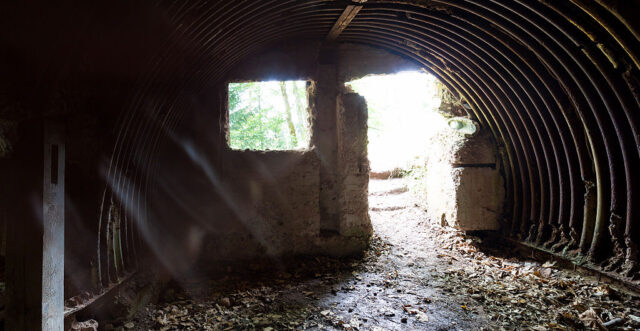
One battlefield that saw a lot of bloodshed for very little gain was Collect du Linge, in Haut-Rhin, France. Between July-October 1915, it was the site of the Battle of Le Linge, which became famous for how little territory the French Army gained, in comparison to the number of casualties that were suffered.
The above photo is a former German command center, which was manned during the engagement.
Bits and bobs strewn throughout the Bois Azoule Forest
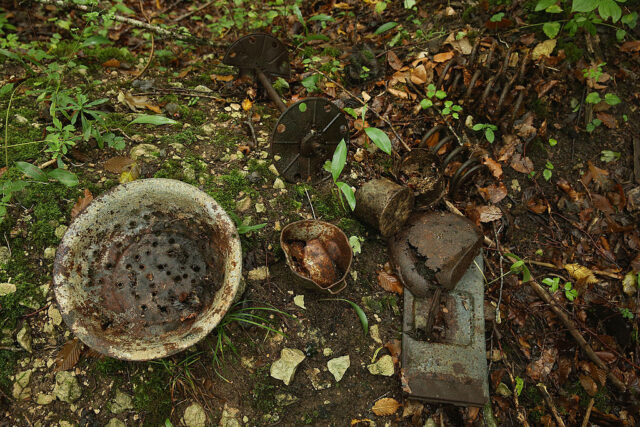
The Battle of Verdun was among the deadliest engagements of the First World War, with hundreds of thousands of casualties suffered by both sides. The above image, taken in the Bois Azoule Forest near Verdun, features just some of what remains: a bullet-ridden bowl, a spool for communications wire, artillery springs and the lid of a German ammunition box.
Remnants of Fort Vaux
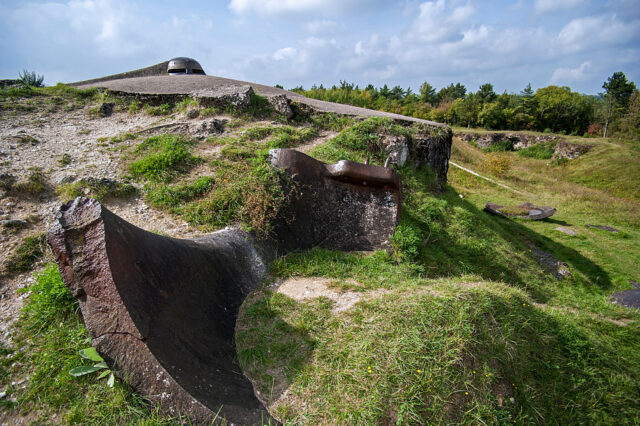
One of the forts constructed to defend Verdun, Fort Vaux was the second to fall to the Germans. This photo, taken at what remains of the defensive structure, shows a demolished turret that’s being taken over by Mother Nature.
Pillbox at Vimy Ridge
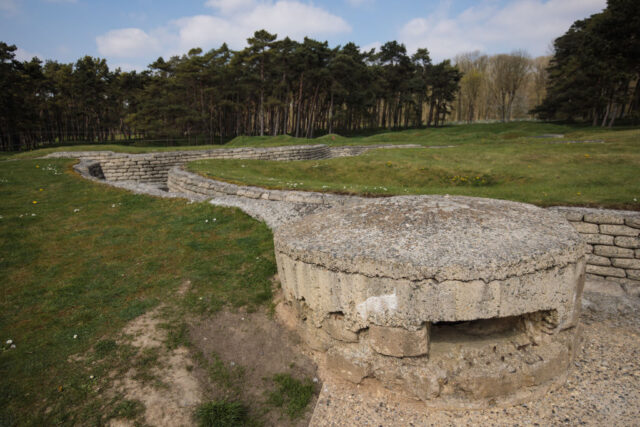
Vimy Ridge was the site of a gruelling battle fought primarily between four divisions of the Canadian Corps of the British First Army and three divisions of the German 6th Army. It resulted in a victory for the British Empire and has since been celebrated throughout the world – particularly Canada – for the heroics, planning and skill of the Canadian soldiers who participated.
Now the site of the Canadian National Vimy Memorial, the former battlefield is still lined with trenches and pillboxes, as shown by the above photo.
German bunker in the middle of Spincourt Forest
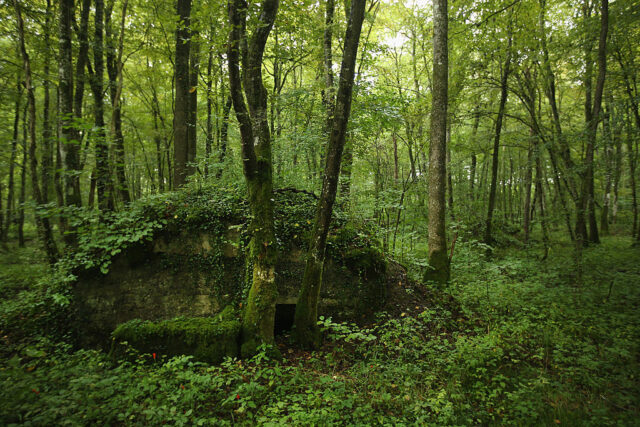
While it may have been partially reclaimed by nature, this German bunker is still visible in Spincourt Forest, near Verdun. During the First World War, the area was a German hub and housed a field hospital, command centers and even rail connections.
Protecting the English coast
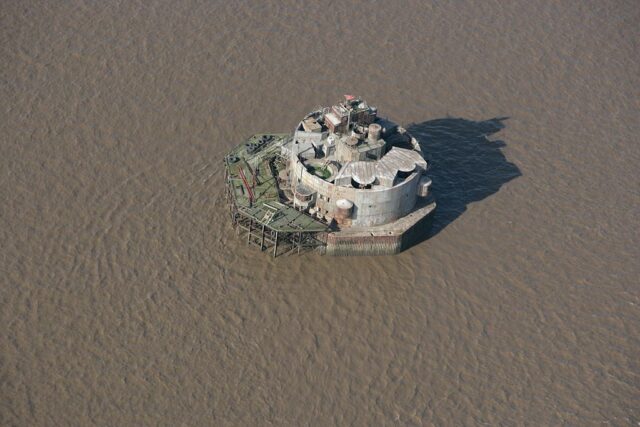
Upon the outbreak of WWI, the decision was made to construct two sea forts in the Humber Estuary to defend the English coast. Work began in 1915, with the intention being that the fortifications could house 200 soldiers.
Unfortunately, they weren’t completed until 1919, one year after the conflict came to an end. That’s not to say, however, that they weren’t put to use. Both the Bull Sand and Haile Sand forts were modernized during World War II, and they weren’t abandoned by the British military until the mid-1950s.
Fighting the Meuse-Argonne Offensive
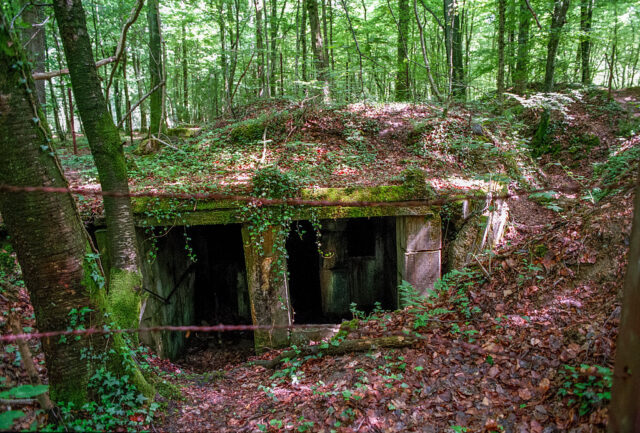
The Meuse-Argonne Offensive ran from mid-September 1918 until the signing of the armistice that November. It saw the French, the Siamese Expeditionary Force and the US take on the Germans in what became a high-casualty event. Given the vast scale – over two million fought on the Allied side, while 450,000 German soldiers took part – it’s no surprise remnants of the fighting still exist.
The above photo is of a German fortification in the Forest of Argonne that was used during the offensive.
Armored observation turret at Fort Douaumont
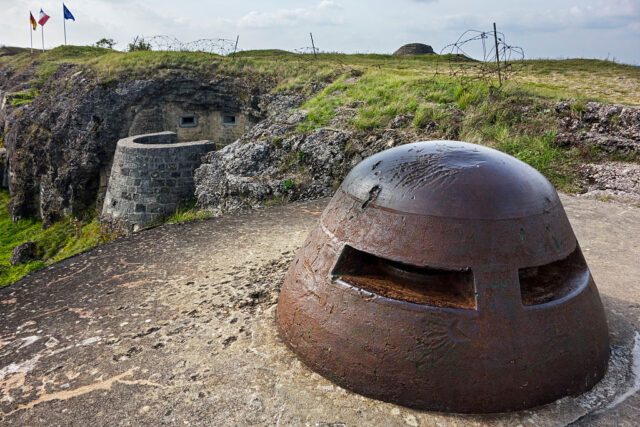
Fort Douaumont was the first French fort to fall to the Germans – just three days into the Battle of Verdun in 1916 – and it was recaptured later that year. The above photo features an armored observation turret at what remains of the defensive position.
Prisoner of war (POW) cemetery in Czersk, Poland
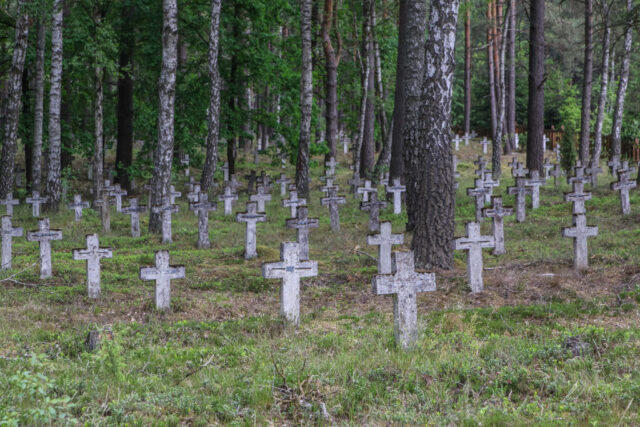
Located in Czersk, Poland, this WWI-era prisoner of war cemetery sits at the site of a former German-run POW camp. It’s said to feature the graves of 4,500 Russian soldiers who were held there during the conflict.
Wire of Death
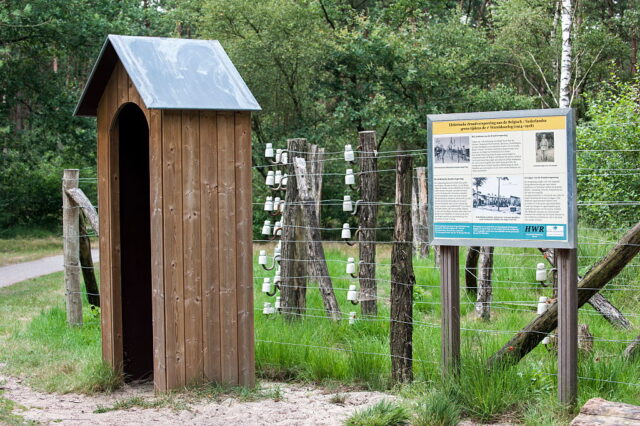
This is a reconstructed section of the Wire of Death, an electric fence that was erected by the Germans along the Dutch-Belgian frontier during the First World War. It’s believed that between 2,000-3,000 lost their lives as a result of the barrier, which had its electricity cut off following the signing of the armistice in 1918.
Farmers are still unearthing artillery in France and Belgium
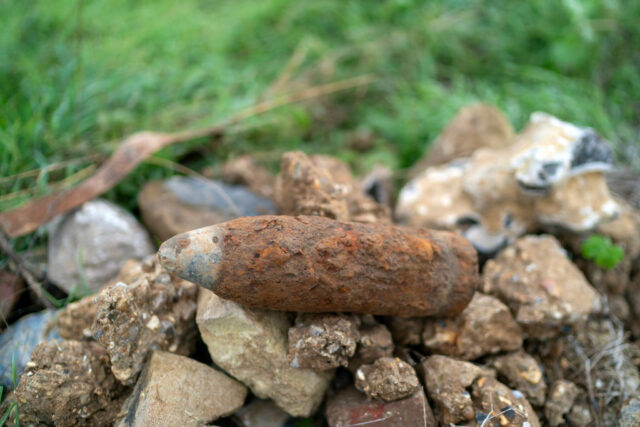
An almost unfathomable number of artillery shells – we’re talking 1.5 billion – were fired along the Western Front over the course of WWI. As such, it’s likely unsurprising to learn that not all of them a) went off and b) were recovered.
Over 100 years after the conflict came to an end, farmers in Belgium and France are still coming across the projectiles. This has led to the “Iron Harvest,” the annual collection of shells, barbed wire, bullets, shrapnel and trench supports that are unearthed during the spring and autumn plowing seasons.
Sanctuary Wood was the site of heavy fighting
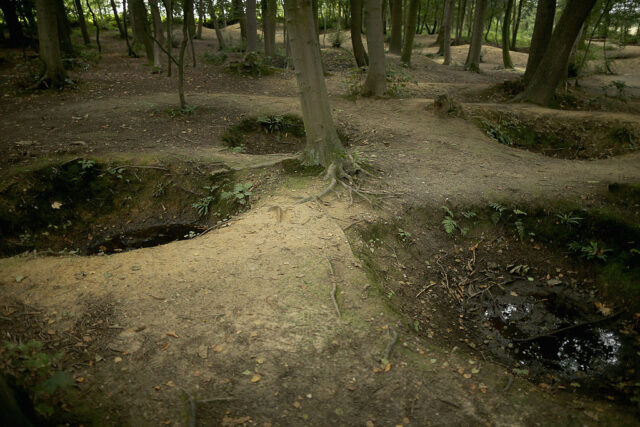
Sanctuary Wood is located east of Ypres, Belgium, meaning it experienced the fighting that occurred in the Ypres Salient. Despite the First World War ending more than 100 years ago, bomb craters continue to mark the forest floor.
Communications trench at Verdun
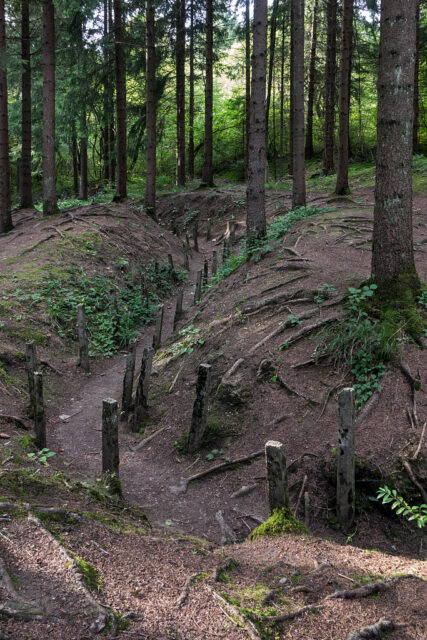
The remnants of a French communications trench in a forest near Douaumont, Lorraine – one of the sites of the Battle of Verdun. Similar trenches line the area, which were heavily traveled throughout the engagement.
Sights at Fort Douaumont
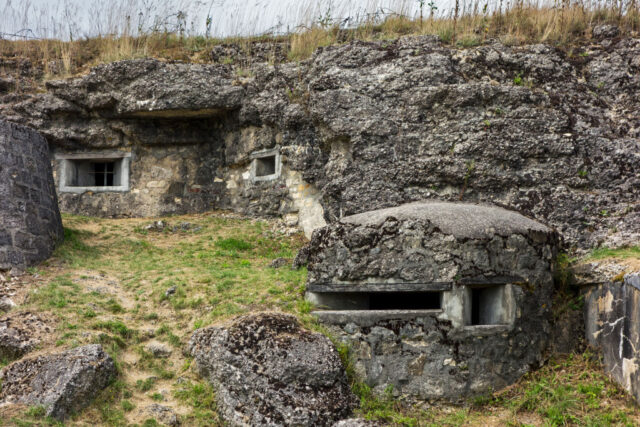
Given how much action occurred at Fort Douaumont, it’s no surprise that historians have worked to preserve what remains. The site is open to visitors, who are able to see this piece of WWI history in person, including loopholes that run along the remaining structure.
Artillery shells still litter West Flanders
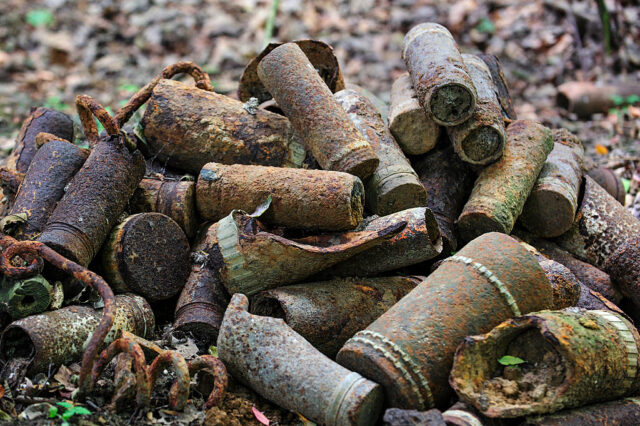
As aforementioned, artillery shells from WWI continue to be unearthed throughout Europe, and that’s especially true in West Flanders, which was the site of the deadly Battle of Passchendaele in 1917. The above photo shows just some of the shells that have been unearthed there.
Trench of Death
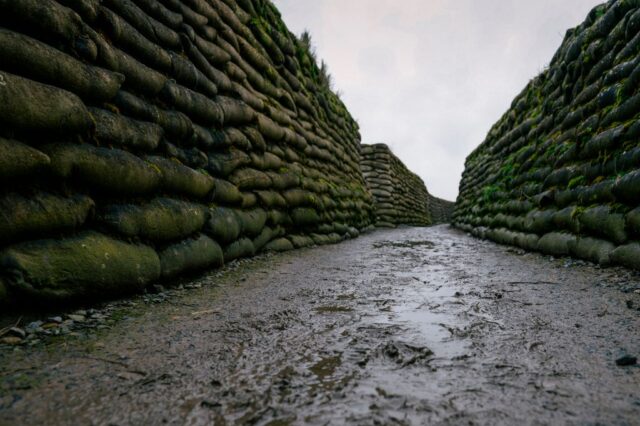
Officially known as the Dodengang, the Trench of Death near Diksmuide, Belgium has a bloody and devastating history. Running along the Yser Canal, it came into existence just in time for the Battle of the Yser in October 1914, during which it bore witness to an innumerable amount of soldier deaths. It continued to be manned until 1918.
Bomb craters near Vimy Ridge
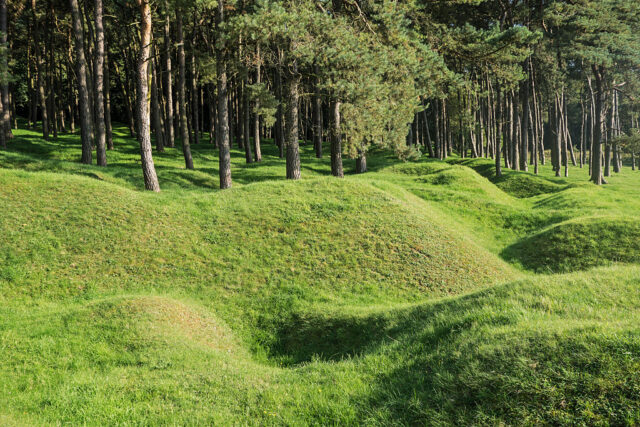
Vimy Ridge is located within the Red Zone – known as Zone Rouge in France – an area that the French government as being too dangerous for humans to inhabit due to the unexploded ordnances that litter the landscape. The above photo shows the bomb craters created during the Battle of Vimy Ridge, offering a glimpse at just how much artillery was fired during the engagement.
More remnants of the Battle of Verdun
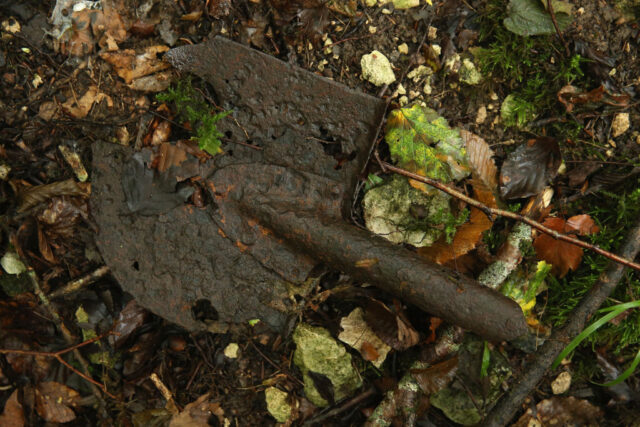
More from us: Inside Two Abandoned Cold War Soviet Bunkers In Western Poland
Artillery remnants aren’t the only wartime artifacts found throughout Europe – everyday objects used by servicemen during WWI are also scattered across the landscape. An example is this rusty spade, which was found in the Bois Azoule Forest.
